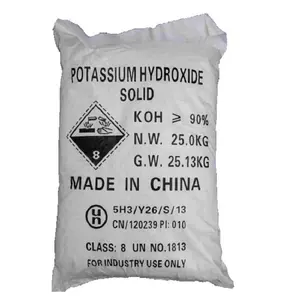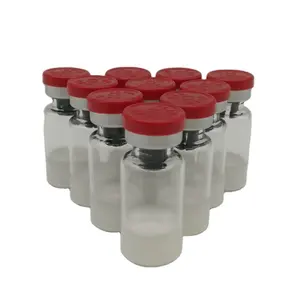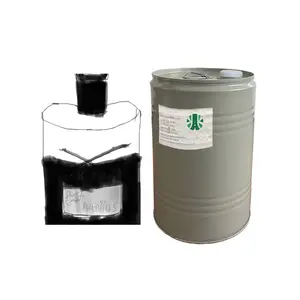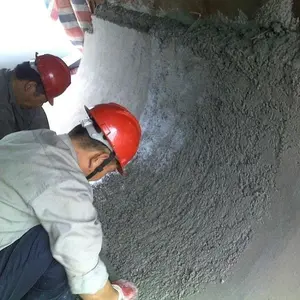Popular in your industry
































































































































































































































Top categories
About fire cement
Introduction
Fire cement, a unique construction material, plays a pivotal role in high-temperature repairs. Its distinct composition and heat-resistant properties make it a vital tool across various industries, including manufacturing and construction. This article delves into the world of fire cement, exploring its composition, types, and crucial role in high-temperature repairs. We'll also discuss its diverse applications, case studies, and application methods. Additionally, we'll emphasize the importance of safety measures, maintenance, and troubleshooting common issues.
Understanding Fire Cement
Fire Cement is a ready-to-use putty, heat resistant up to 1250°C. It comes in different sizes and colors, catering to various needs. This cement is primarily used to seal joints in wood stoves, especially around the flue area, and for repairing firebricks. Once dry, fire cement forms a solid, non-flexible sealant, enduring temperatures well above the normal operating temperature of a stove. However, the expansion and contraction of metal stoves can cause cracks in the fire cement around joints.
Composition and Properties of Fire Cement
Fire cement, also known as refractory cement, is a specialized material designed to withstand high temperatures. It's a composite of various mixtures such as fireclay, silica, and ganister, or combinations like fireclay with crushed brick. The cement is formed by bonding a bulk refractory grain mass with a fired bond, often incorporating elements like Si3N4 and/or Si2ON2. This unique composition shields the cement from erosion when used as a liner for furnace walls and troughs, making it ideal for high-temperature industrial settings.
Types of Fire Cement
Refractory concrete, a type of fire cement, retains its mechanical properties during prolonged exposure to high temperatures. Binders such as Portland cement, slag Portland cement, high-alumina, periclase cement, water glass, and phosphate bonds are used in its composition. The filler includes refractory rocks and chips of fired heat-resistant products. There are three types of refractory concrete based on their degree of heat resistance. It's important to note that refractory concrete differs from refractory mortar, which is used as a binder and filler between fire bricks.
The Role of Fire Cement in High-Temperature Repairs
Fire cement is a specialized construction material that offers excellent heat resistance, high adhesion, and resistance to thermal shock. It plays a crucial role in the construction, repair, and maintenance of heat-intensive appliances and structures. This material provides reliable seals and ensures safe and efficient operation in high-temperature environments. It can withstand temperatures up to 1250°C, making it a valuable asset for high-temperature repairs.
Applications in Different Industries
Fire cement finds its application in a variety of industries due to its heat-resistant properties. It is used in the manufacturing of refractory materials and high-temperature insulation. It's also a crucial component in high-temperature thermal textiles. Fireplaces and stoves often use heat-resistant materials like fire cement. In the construction industry, it's used in plumbing and building products. Additionally, it's used in the creation of wood-fired ovens and pre-cast shapes. Each application takes advantage of the unique properties of fire cement, making it an indispensable material in these industries.
Case Studies of Fire Cement Use
Fire cement plays a crucial role in high-temperature repairs, especially in stoves and similar appliances. Over time, these appliances undergo numerous heat cycles, leading to metal fatigue and potential smoke leakage. Fire cement can be easily applied to these cracks, restoring the appliance's functionality. It's not just stoves; fire cement finds its application in fireplaces, gas cookers, boilers, central heating systems, and ranges. Another common use is on flue pipes, where it helps achieve a tight seal between the stove pipe and the flue liner.
How to Apply Fire Cement for Repairs
Fire cement can be applied to repair cracks in high-temperature appliances. Start by removing any loose old cement, being careful not to damage the appliance. Vacuum the area to remove dust and debris. Secure the fireplace cover, collar, and flue pipe before applying new fire cement. Use masking tape to create a clean edge for the cement. Avoid letting excess cement dry on the appliance as it can be difficult to remove. After application, let the cement dry for about 12 hours. Gradually heat the appliance to help the cement cure.
Preparation and Safety Measures
Working with fire cement, like any cement, requires careful attention to safety measures. Cement can cause ill health by skin contact, eye contact, or inhalation. The risk of injury depends on duration and level of exposure and individual sensitivity. It's crucial to wear protective clothing, such as waterproof rubber boots when working with wet cement. Cement dust released during bag dumping or concrete cutting can also irritate the skin. Moisture from sweat or wet clothing reacts with the cement dust to form a caustic solution. Exposure to airborne dust may cause immediate or delayed irritation of the eyes.
Step-by-Step Application Process
Applying fire cement for repairs is a straightforward task. First, ensure the area is clean, free from dust and rust. Wear a latex glove and apply a liberal amount of cement on one finger. Work the cement well into the cracked or damaged area. As soon as possible, gently heat dry the repaired surfaces, gradually raising the heat to full operating temperature over 3-4 hours. Apply further cement to any fire cracks that may appear. Use the cement straight from the tub for best results.
Maintenance and Longevity of Fire Cement Repairs
Fire cement, like any other high-temperature resistant material, requires regular maintenance to ensure its longevity. This involves cleaning off any soot, dirt, or ash that has built up on its surface. If any cracks appear, they should be sealed with a fire cement sealant or mortar mix to keep the structure safe and secure. In colder climates, it's essential to winterize your fire cement structures by covering them with a tarp or sheet of plastic to protect them from snow and rain. Acting quickly on any signs of damage will ensure the strength and safety of your fire cement repairs for many years.
Regular Inspection and Maintenance Tips
Regular inspection and maintenance of fire cement are crucial for its longevity. Over time, the cement seal at the base of your flue pipe may break or crumble due to the slight shift in the stove balance. To maintain it, remove any easily removable pieces of previous fire putty when the stove gets cold enough to touch. Vacuum around the seal to remove any residual dust and cement. Apply new fire cement for sealing up the cracks. Remember, the general curing time for fire cement is around 12 hours. However, always read the instructions as different brands may have different requirements.
Troubleshooting Common Issues
Fire cement, while robust, can crack due to the expansion and contraction of your metal stove. This is not a critical issue unless smoke is coming through. However, regular maintenance is essential. Cracks or fallen out cement can be easily repaired with inexpensive fire cement. Ensure the area is clean, apply a liberal amount of cement, and then heat dry the repaired surfaces gradually. Additional cement can be applied to any fire cracks that may appear.
Conclusion
Fire cement, with its unique heat-resistant properties, plays a pivotal role in high-temperature repairs across various industries. Its diverse applications, from sealing joints in wood stoves to lining furnace walls, make it an invaluable asset. However, like any other material, it requires careful application, regular maintenance, and safety measures to ensure its longevity. Despite potential issues like cracking due to metal expansion, these can be easily addressed with regular inspections and prompt repairs. In essence, fire cement is a versatile, robust, and reliable solution for high-temperature repairs, ensuring safe and efficient operation of heat-intensive appliances and structures.































